Tarragon was the rage back in the ’70s…or was it the ’80s? Whatever era it was, I remember in high school my friend’s mom made a salad dressing with a French vinegar infused with tarragon, which still lingers in my memory today. (Which is really saying something, since I barely recall what I had for dinner last night.)
Back then, anything French was considered very chic in America. People could buy canned snails at S.S. Pierce, a swanky “gourmet” food business that sold all sorts of exotic foodstuffs that eventually went out of business. There were “French-cut” green beans and “French vanilla” ice cream.
Chuck Williams began importing Le Creuset cookware, and people started doing things like using French “working” glasses to drink beverages from in America to make them feel more French. When someone served Romain a glass of water in one a few years ago, he’s no snob, but confided in me later that it was very strange.
For whatever reason, tarragon fell off the radar. Perhaps it was all that dusty-tasting dried tarragon that people maybe used when they saw a recipe that called for “tarragon,” which, like basil, chives, and parsley, loses so much of what makes it special when it’s dried.
I rediscovered fresh tarragon when I moved to France and would pick some up at the market, adding the lively-flavored leaves, finely chopped, in salads, or added to a quiche filling. Chervil is another herb that immediately improves almost anything it touches but especially shines on salads.
French cooking relies more on fresh herbs rather than spices, which are used more judiciously in French cuisine. The good news is that fresh herbs are very inexpensive at French markets, and it’s rare to pay more than €1,50 ($1.60) for a generous bunch of thyme, rosemary, dill, or tarragon. Other herbs, like parsley, cilantro, and mint, can often be had for as little as 50 centimes. So they’re not something that breaks the bank if you choose to buy them.
Over the years, many readers kindly (others, rather insistently) implored me to grow my own herbs in our sidewalk planter boxes, letting me how easy they were to grow. But more than once I saw a mec relieve himself in one of the planter boxes, so anything growing in there was a no-go zone for me, culinarily speaking. And Parisians can be particular neighbors: A friend in another arrondissement planted herbs in planter boxes outside her window and was told that she could only plant flowers in them.
(I once had some friends stay in my place who planted a huge basil plant in one of our flower boxes. People would grab sprigs or leaves sometimes, probably to cook with, which didn’t bother me. But finally, someone yanked the whole plant out of the ground and took it with them. It may have been the woman across the street who I once caught digging out plants from our planter boxes. When I opened the door and caught her with a small shovel and a bag, she said she was “cleaning” the flower boxes…then sprinted home across the street, leaving a few gaping holes in the soil.)
Now that we have a garden, and a fence, we’ve been planting herbs. For whatever reason, the previous owner pulled out most of the herbs that were there, roots and all (maybe she is related to our current neighbor across the street?), except for one: Tarragon, which has been growing like crazy.
Like my Basil Vinaigrette, I rely on a machine to do most of the work and use my mini-chopper for this. As a restaurant cook, I never would have dreamed of buying a dinky mini-chopper. But when I lived in a severely space-challenged kitchen, i.e., my first kitchen in Paris, I ate my words and found the little chopper performed most of the tasks of a regular-sized food processor without the footprint of a bigger machine, which would have taken up 25% of my entire kitchen. If you don’t have a mini-chopper, a blender will do just fine.
Tarragon Vinaigrette
4 to 6 servings
One French secret, which I’ll admit that I’ve never gotten fully behind, is to use neutral vegetable oil for salad dressings, rather than olive oil. (Or a mix of the two.) The reason being is that the strong taste of olive oil hides other flavors. I’ve not followed that logic, but you’re welcome to try this with neutral vegetable oil rather than olive oil. It also may be a holdover from days of yore; a French friend who’s a few years older than me told me that when she was young, butter was used, not olive oil. So perhaps it’s from the days when people kept cooking/frying oil on hand, but not olive oil?
If using a mini-chopper, I like the tarragon chopped into very small pieces. If using a blender, feel free to take it as far as you’d like in terms of smoothness. The touch of honey gently tempers the sharp flavor of the tarragon, but you can leave it out.
1/2 cup (125ml) extra-virgin olive oil
1 cup (18g) loosely packed fresh tarragon leaves
3 tablespoons red wine vinegar or sherry vinegar
1 teaspoon water
1 small shallot, peeled and sliced
1 teaspoon Dijon mustard
1/2 teaspoon of sea or kosher salt
1/4 teaspoon honey (optional)
1. Put all the ingredients in a mini-chopper (or blender).
2. Pulse until all the ingredients are well-mixed.
We enjoyed this over a composed summer salad of whatever I had on hand. It’s best served at room temperature and goes well with grilled vegetables, fresh tomatoes, mozzarella, grilled fish, grilled chicken breasts or thighs (or radicchio), or drizzled over hard-cooked eggs topped with good-quality anchovies.
I’ve not kept this vinaigrette longer than 3 days, but if you don’t eat it all at once, store it in the refrigerator, letting it come to room temperature before serving.
[Print recipe here: Tarragon vinaigrette]





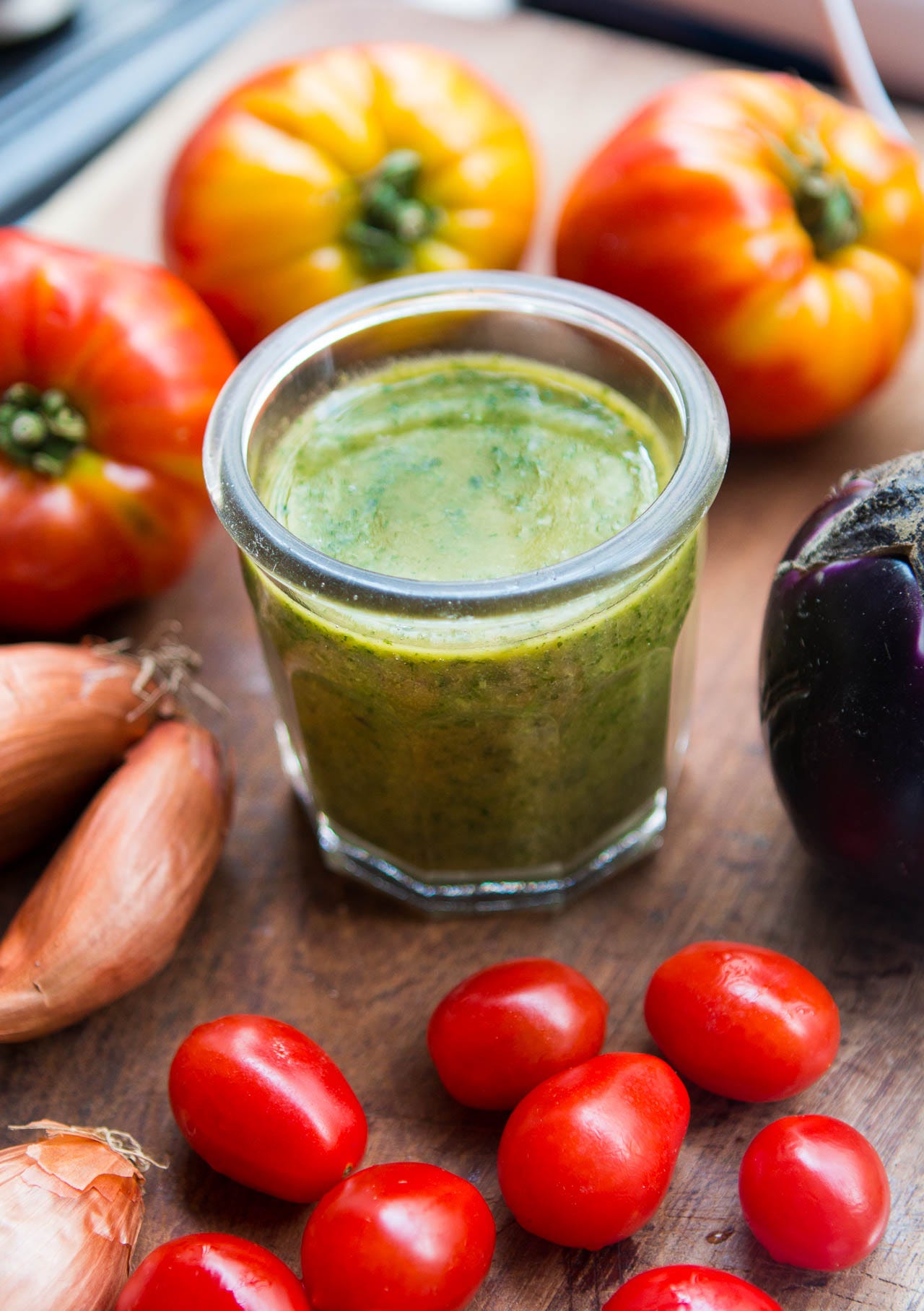
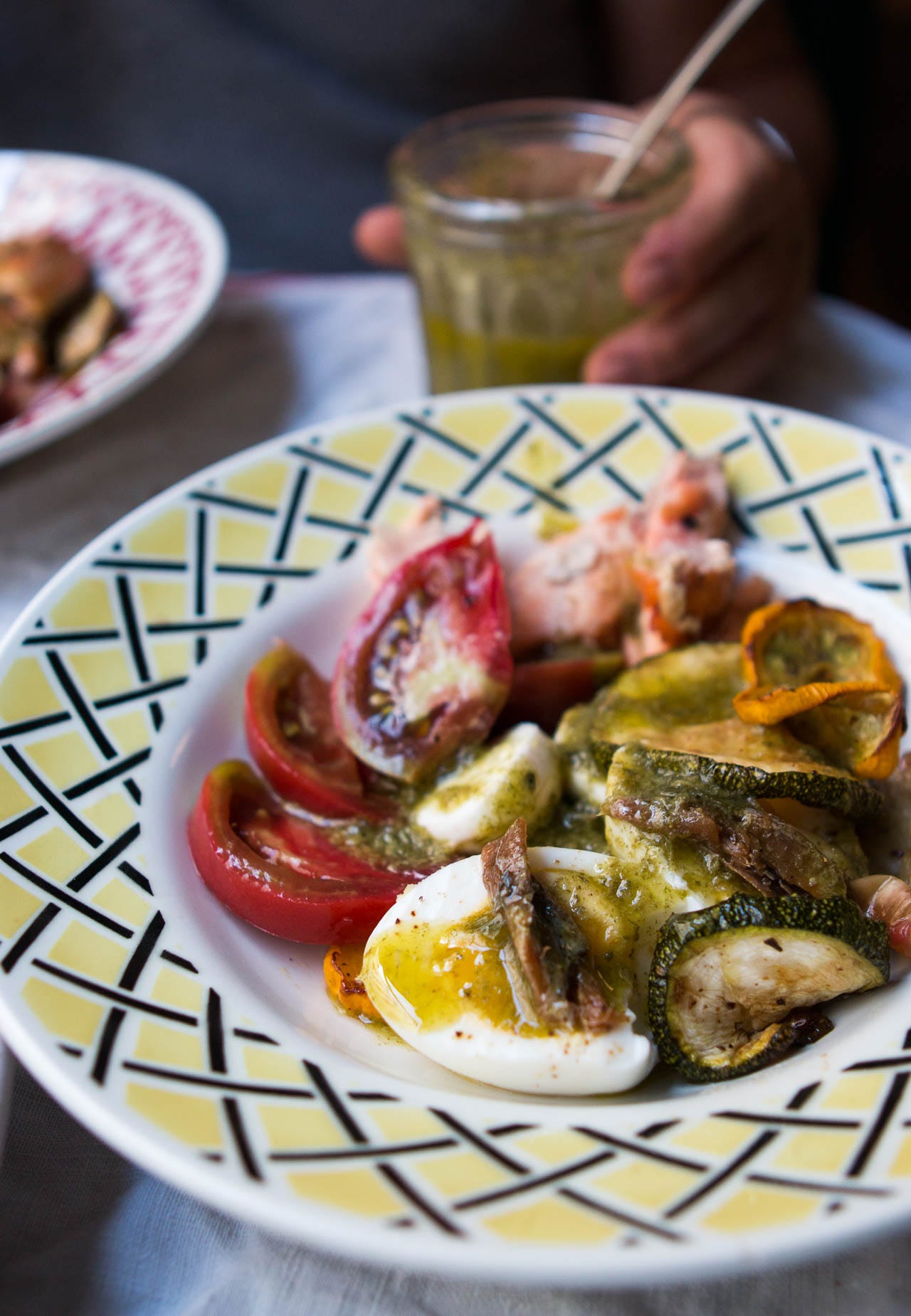

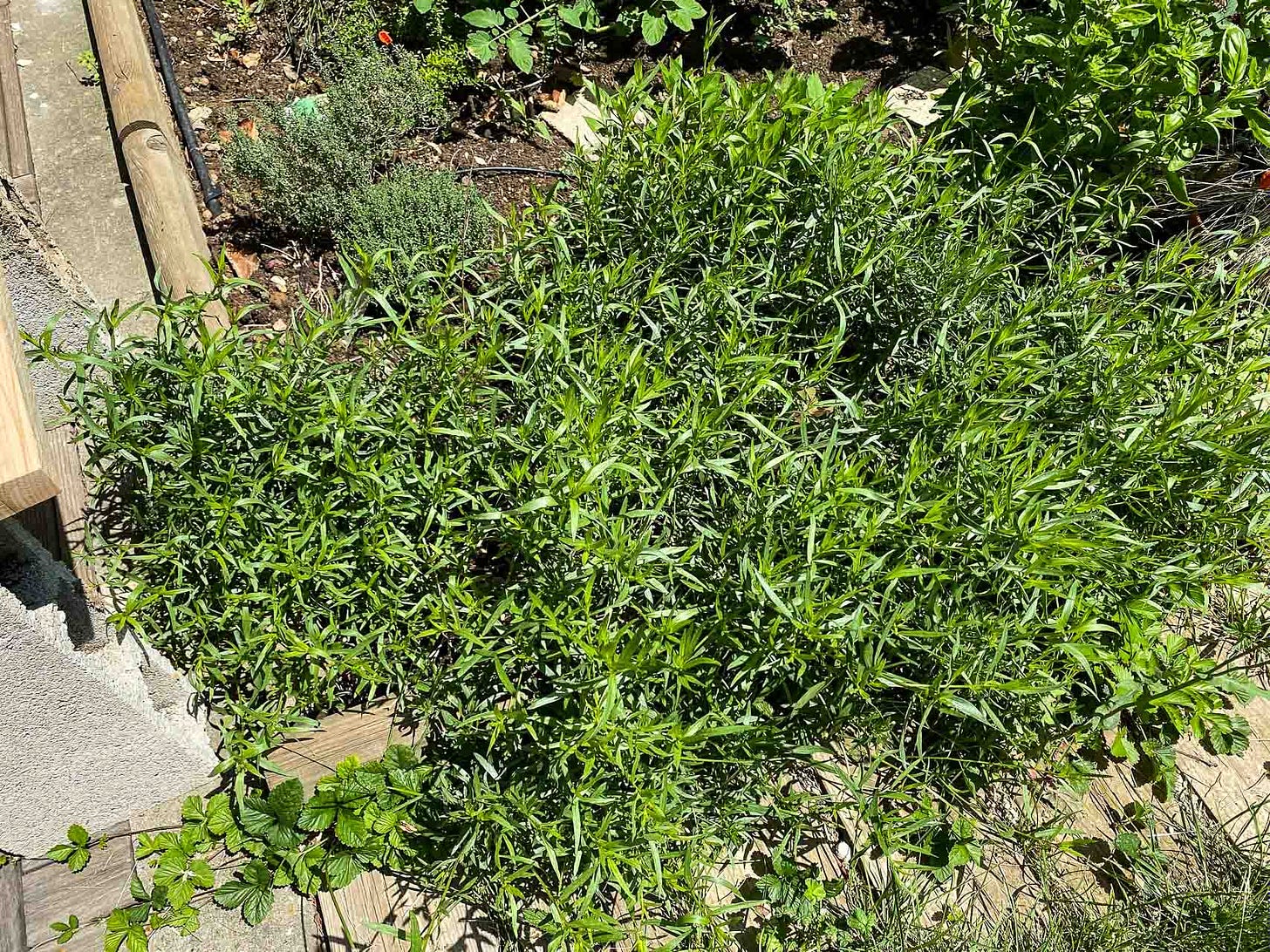
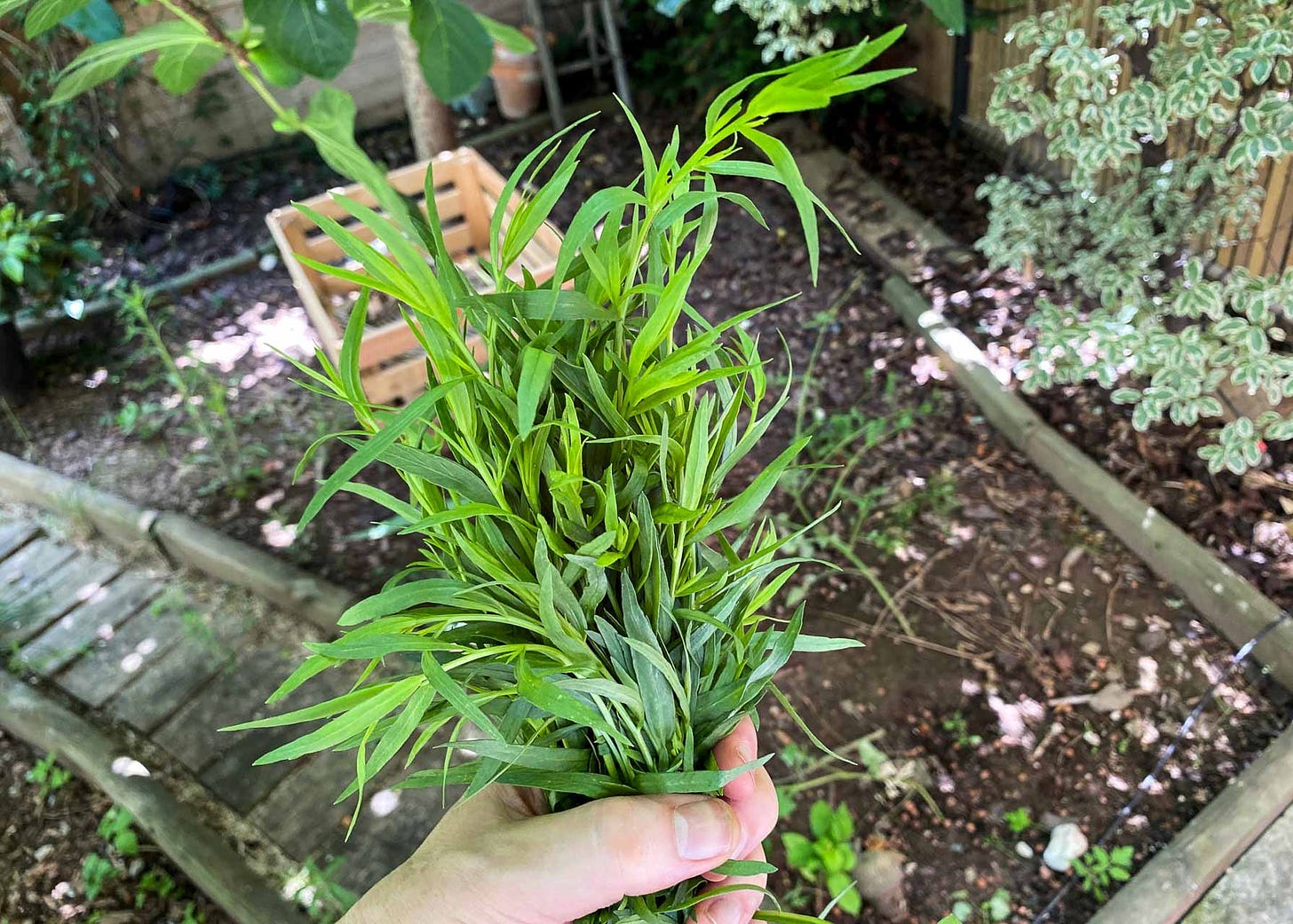
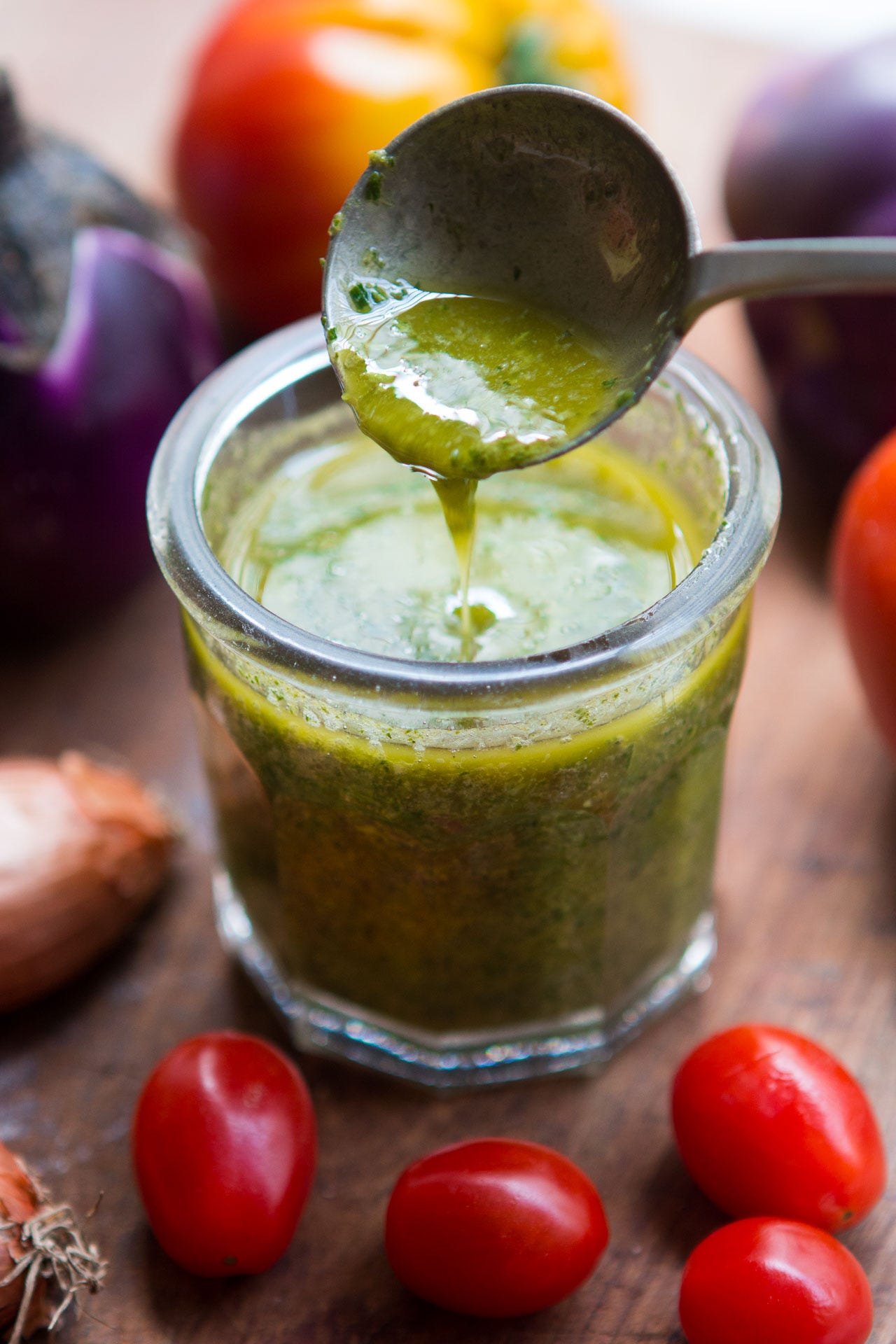

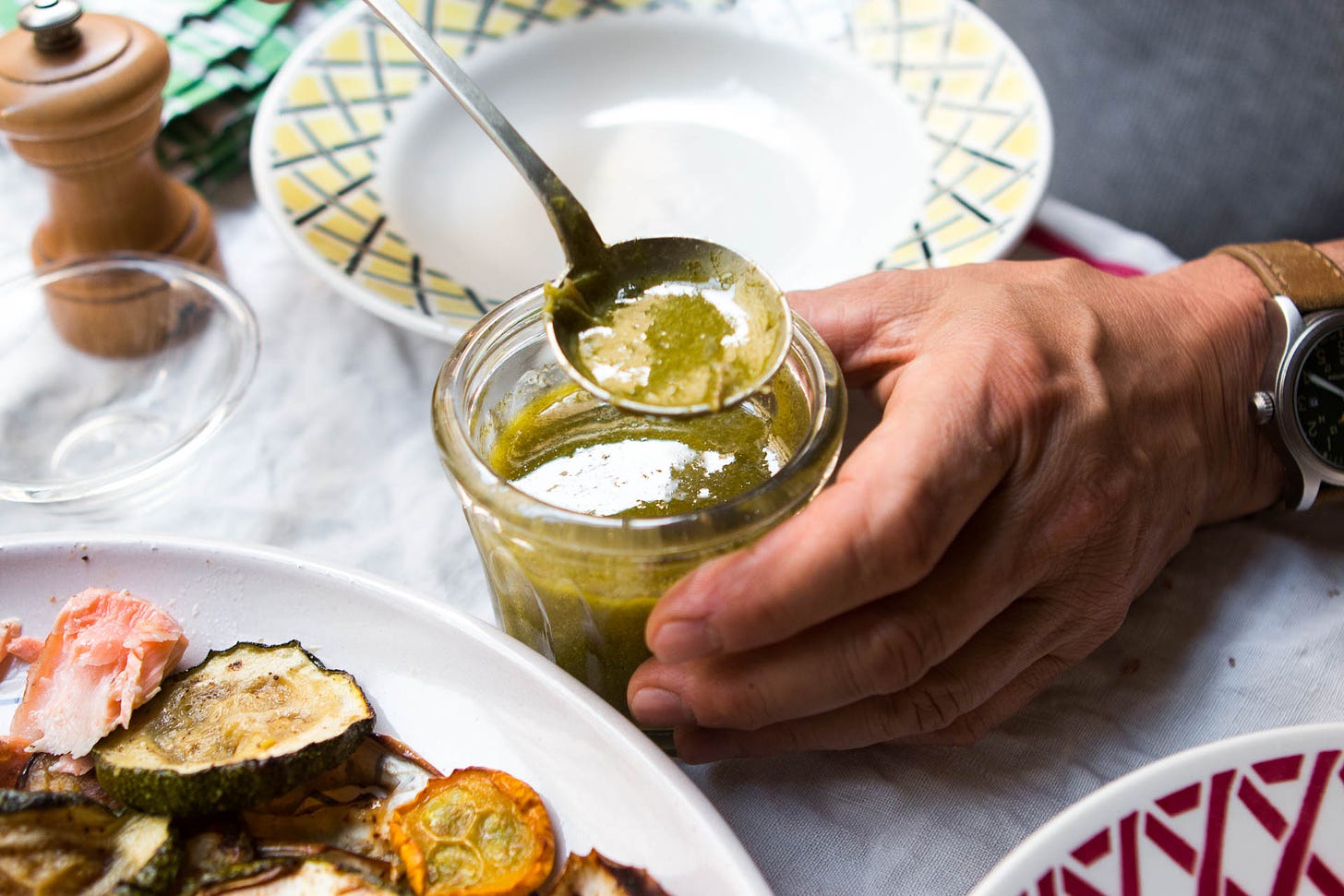
A recipe I’m keen to try, thanks. I have a large patch of tarragon in my garden. Here are two easy and quick ways to use it up if you have too much, but be sure to cut it before it flowers for the best flavor. I cut a large quantity of it and stuff the cavity of a chicken with it, not bothering to de-stem, and then roast the chicken. The scent in the kitchen is heavenly. I also make tarragon vinegar: fill a jar (with a good seal) 2/3 full of tarragon leaves, top with 600-900 ml of white wine vinegar, seal it and let it sit for 2 weeks, shaking well once a day. I strain it and pour it into small bottles using a funnel. Great little gifts.
Thanks for this. I too remember the tarragon craze in the US but now avoid using the dried herb, for the reason David gave. Now I am inspired to buy a pot of tarragon for my patio container garden. I love David’s Basil Vinaigrette recipe and use fresh spinach when there’s no basil handy.